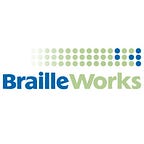Why is Braille Literacy So Critical?
Braille literacy is reading, comprehending, and writing in braille. Look at it this way: literacy for students without a visual impairment is reading, writing, and understanding the written word.
So, why would it be any different for a student with a visual disability? It shouldn’t be, yet it still is for many students in the United States.
You see, braille literacy is so critical that the world dedicates the month of January to braille literacy. For example, events like the Braille Challenge and Santa Reads Braille promote braille literacy.
Braille Literacy and Equality
Braille literacy is genuinely about equality. Keep in mind; literacy affects a person’s health, lifespan, wellness, and socio-economic status. All of which are strong predictors of future life outcomes.
Sometimes putting ourselves in another’s shoes helps us understand things a little better. Imagine the following and ask yourself how you would respond.
Your child goes to school, and rather than receiving books, they get headphones and an audio recording of everything that should be in print. Then, when it is time for your child to answer questions, they have someone else write out their response.
How would you respond to this method of instruction? Chances are, you would meet this teaching method with many questions and demands for change. However, this scenario wouldn’t occur for most students because states define reading, not listening, as literacy. Yet, literacy is not part of the education for many students with blindness or visual disabilities. This practice is an example of inequality.
Timeline of advancements in braille
- 1869 - We see the introduction of braille code.
- 1932 - Braille code was adopted as the standard English code.
- 1932 to the late 1960s — Most students with blindness were taught to read and write braille.
- 1973 - The Rehabilitation Act allowed students with a visual impairment to attend local public schools. Braille was not taught to all students in public schools.
- 1975 - Congress passed public law 94–142 called The Education of All Handicap Children Act, which includes the Free and Appropriate Education Act (FAPE).
- 1991 - The National Literacy Act defines “literacy” as “an individual’s ability to read, write, and speak in English, and compute and solve problems at levels of proficiency necessary to function on the job and in society to achieve one’s goals and develop one’s knowledge and potential.”
- 1995 to 1996 — Approximately 54,000 students were legally blind, but only around 4,700 students were taught braille in public schools.
- 1997 - A revision to the Individuals with Disabilities Education Act (IDEA) states: “(iii) in the case of a child who is blind or visually impaired, provide for instruction in Braille and the use of Braille unless the Individualized Education Program (IEP) team determines, after an evaluation of the child’s reading and writing skills, needs, and appropriate reading and writing media (including an evaluation of the child’s future needs for instruction in Braille or the use of Braille), that instruction in Braille or the use of Braille is not appropriate for the child.” 20 U.S.C. 1414(d)(3)(B)(iii).
- 1997 - The IEP teams rarely determined braille as the appropriate pathway to blind literacy. This was mainly due to the lack of teachers able to teach Braille writing and reading.
- 1999 - Braille instruction was proposed as the pathway to national literacy for students who are blind. Many contested the move as a violation of students’ IEP.
Literacy is Not a Requirement in All States
You are probably asking yourself, “What? Literacy is not a requirement for students with blindness?” As you can see above, the federal government says otherwise, but there is little oversight and implementation of the federal laws. In fact, many school districts don’t have braille instruction or materials as a resource for students. Sounds insane, right? But, many families accept this as a fact.
Parents are often focused on meeting the many needs of their child with a visual impairment that they look to the schools as the experts on children. Often this trust leads to parents unintentionally waiving their child’s rights to literacy. After all, we want to believe that schools and educators typically have all childrens’ best interests at heart. This is why it is essential to understand your child’s rights and the requirements of schools to provide literacy. Schools often predetermine if a child with a visual impairment or blindness is a candidate for braille literacy. However, there is no predetermination factor for a child without blindness. So, this is why parents need to stand firm and require literacy for their children.
Outcomes of Braille Literacy or lack thereof
- 90% of employed people with blindness can read and write braille.
- 60% of students with blindness drop out of school. The unemployment rate of adults who are blind hovers around 70%.
- 85% of students who are blind attend public schools. The braille literacy rate of the students with visual impairments is about 10%. Each year there are fewer teachers qualified to instruct students in braille literacy.
- Each state has different requirements regarding braille literacy.
The Facts and The Future of Braille Literacy
Researching the facts about braille literacy in America is difficult because there is very little data after 2009. This insufficient data suggests that there is still a lack of understanding of the importance of braille literacy. So, the future of literacy for students with blindness and visual disabilities depends on education, advocacy, and action.
This post was written by Braille Works.
Originally published at https://brailleworks.com on January 13, 2022.
